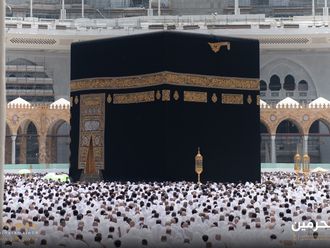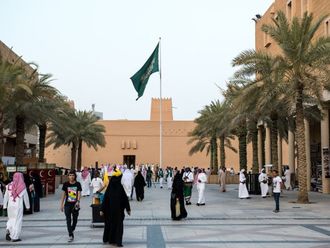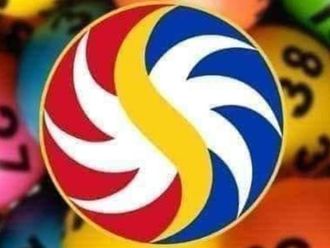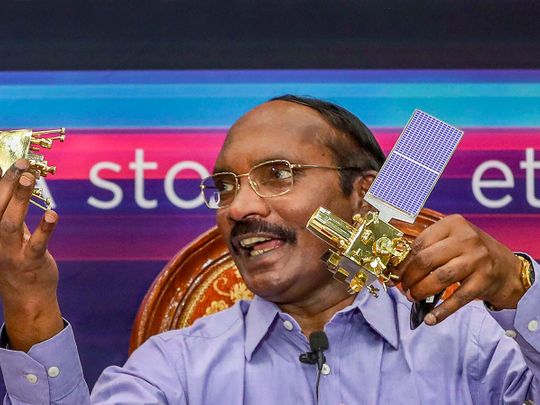
“First of all, I’m an Indian.” With those words, Dr Kailasavadivoo Sivan, chairperson of the Indian Space Research Organisation (Isro), had endeared himself to his compatriots.
The son of a farmer from Kanyakumari, in India’s state of Tamil Nadu, Dr Sivan is the top scientist behind India’s epic quest to soft-land a spacecraft on the moon.
He is a space science scholar, having authored the book Integrated Design for Space Transportation System.
Remarkable success
Isro under Dr Sivan's leadership has achieved remarkable success. Following a 47-day journey, the Chandrayaan-2 mission he directed reached the intended lunar orbit in a near-flawless operation.
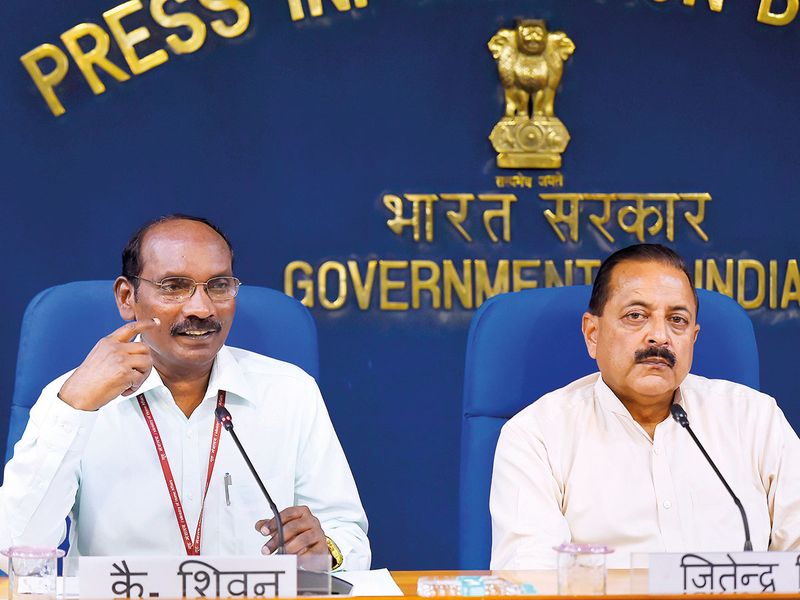
Today, the spacecraft has enough fuel to circle the Moon for up to seven years.
The manoeuvre from Isro's launchpad in the Indian state of Andhra Pradesh to the moon was a textbook success.
Over 47 days from July 22, Chandrayaan-2 travelled nearly 400,000km from the Sriharikota rocket launch centre. until the orbiter Chandrayaan-2 released the combined lander and moon rover.
In the first week of September, Dr Sivan's team successfully separated the moon lander Vikram, carrying the rover Pragyan in its belly, from the orbiter.
On Friday night, Isro scientists directed the lander to make a graceful, soft touch-down on the Lunar surface.
It was the terminal phase of Chandrayaan 2 mission.
Dr Sivan described the complex descent maneouvre as "15 minutes of terror". And the entire nation of 1.3 billion waited with bated breath.
Historic moment
It was supposed to be a moment of unspeakable joy: Isro had never done this before.
If the descent went without a hitch, India would be just the fourth nation to complete a soft-landing of a spacecraft on the Moon — after Russia, the US and China.
Then at about 2.1km above the moon's surface early on Saturday (September 7) morning, Isro reported losing contact with Vikram.
India — and the rest of world rooting for the mission's success — were stunned.
Racing against time
Now, the Isro team are racing against time to salvage the lander-rover combo following what Dr Sivan said was a "hard landing".
At the Isro Mission Operations Complex in Bengaluru, visited by PM Narendra Modi, the Indian leader was then seen consoling Dr Sivan and the stunned staff.
It's a bittersweet moment.
Modi managed to turn the situation around, ready with words of encouragement. He clasped the visibily emotional Sivan in a lengthy hug. And declared India's pride for its scientists.
Modi affirmed the mission was "worth it".
On Tuesday, Isro confirmed that the lander has been located on the lunar surface by the on-board cameras of the Chandrayaan-2 orbiter which is circling the moon in its intended orbit.
Top scientist
As the top Indian space scientist and the current Isro chairperson, Dr Sivan has overseen the Chandrayaan-2 mission.
It's a post he held since January 16, 2018, when Dr Sivan took charge as the new Secretary, Department of Space, Chairman of the Isro and the Space Commission.
Today, Dr Sivan has become a household name in India and among the world's space enthusiasts.
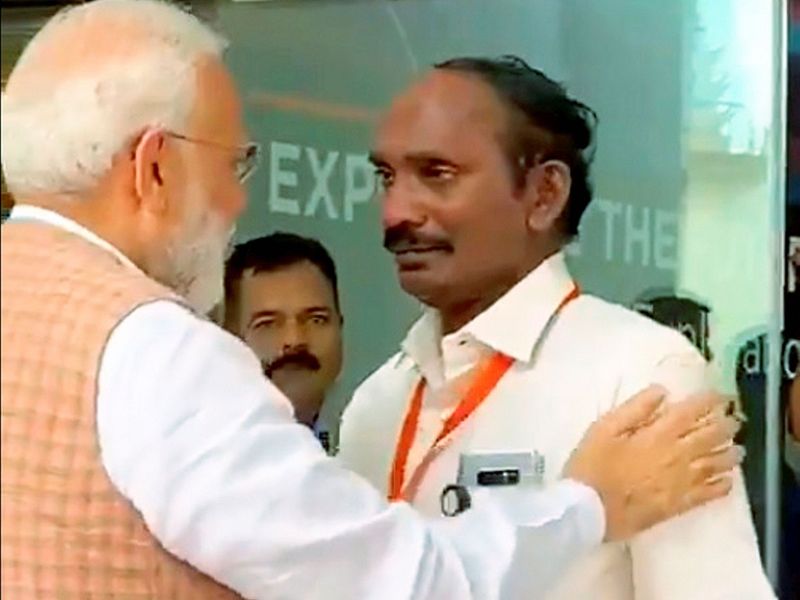
His story has inspired an entire nation.
Vikram and Pragya may have been incapacitated by the “hard landing” — Isro is still investigating if they can be revived — which means the complex mission may not have hit the 100 per cent mark.
Look at the bright side, though: Chandrayaan-2 has brought India closer to the moon.
And Dr Sivan, the man responsible for it, has become a national icon of achieving great feats from humble beginnings.
'First of all I'm an Indian'
In an interview with the local Sun TV, Dr Sivan was asked if he had a message for the people of Tamil Nadu, since it was a proud moment for every person in his community.
Then came his reply, “First of all, I am an Indian”.
That won hearts and minds across the nation, and perhaps a new generation of youngsters spired to take up space science.
I joined Isro as an Indian. Isro is a place where people from all regions and languages work and contribute. But I am grateful to my brothers who celebrate me.
“I joined Isro as an Indian. Isro is a place where people from all regions and languages work and contribute. But I am grateful to my brothers who celebrate me,” he told the channel.
His popularity is such that he’s got a number of doppelgangers on Twitter.
Amidst the Chandryaan-2 hype, accounts on microblogging site under the name of the Isro chief had been doing the rounds.
The pages purported to be the personal accounts of K Sivan. However, ISRO in a statement clarified that the ISRO Chief does not have any personal social media account.
Education
Sivan studied in a Tamil medium Government school in Mela Sarakkalvilai Village and later in Vallankumaranvilai in Kanyakumari district. He is the first graduate from his family.
In 1980, he graduated with a bachelor's degree in engineering from Madras Institute of Technology.
In 1982, he obtained a Master's Degree in Aerospace Engineering from Indian Institute of Science, Bangalore, and started working in ISRO.
In 2006, he earned a doctoral degree in aerospace engineering from Indian Institute of Technology, Bombay.
He is also a Fellow of the Indian National Academy of Engineering, the Aeronautical Society of India and the Systems Society of India.
What Dr Sivan did for Isro
Sivan worked on the design and development of launch vehicles for Isro, which he joined in 1982 to participate on the Polar Satellite Launch Vehicle (PSLV) Project.
He rose from the ranks.
On July 2, 2014, he was appointed director of Isro's Liquid Propulsion Systems Centre.
On June 1, 2015, he became the Director of VSSC.
On January 2018, Sivan was appointed Isro chairman and assumed office on January 15, 2018.
On July 22, 2019, under his chairmanship, Isro launched Chandrayaan-2, India's second mission to the moon.
Where is the Vikram lander?
On Sunday, Dr Sivan announced that his team had spotted the location of Vikram on the Lunar surface. The lander Vikram has a rover, named 'Pragyan' tucked inside it.
Isro ground-stations lost communication with the lander during its final descent, at about 2.1km above the lunar surface, minutes before the planned soft-landing in the early hours of Saturday.
Dr Sivan said that Chandrayaan 2's orbiter clicked a thermal image of the lander, and Isro is trying to establish communication with it. The Isro chief stated that Vikram's landing must have been a “hard landing”.
Twitter doppelganger
From its official Twitter handle, Isro made it clear that K Sivan did not actually have any social media accounts and those were all fan pages made by netizens.
This implied that any Isro-related update on those accounts did not particularly mean that it was authorised by Dr Sivan.
Isro: Early years
The Indian National Committee for Space Research (Incospar) was found in 1962 with Vikram Sarabhai as its chairperson.
In its modern form, Isro was created by Sarabhai in 1969. Since then, there have been eight chairmen of the Isro, with Prof. Satish Dhawan serving the longest term of 12 years.
Personal details
- Name: Dr Kailasavadivoo Sivan
- Born: April 14, 1957 (age 62 years), in Tamil Nadu, India
- Spouse: Malathi Sivan
- Education: Indian Institute of Technology Bombay(2006), MORE
- Books: Integrated Design for Space Transportation System
- Children: Siddharth, Sushanth
Awards
- Shri Hari Om Ashram Prerit Dr Vikram Sarabhai Research award (1999)
- ISRO merit award (2007)
- Dr Biren Roy Space Science award (2011)
- Distinguished Alumnus Award (2013) from Madras Institute of Technology Alumni Association, Chennai
- Distinguished Alumnus Award (2018) from Indian Institute of Science, Bangalore
- He was conferred Doctor of Science (Honoris Causa) from Sathyabama University, Chennai in April 2014.
- Tamil Nadu government’s Dr. A.P.J. Abdul Kalam Award. (2019)




